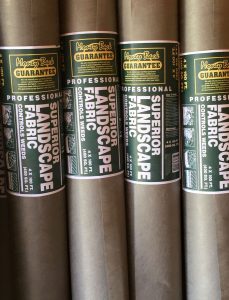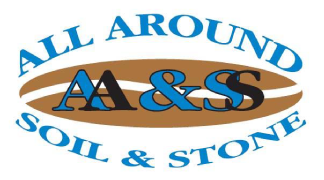What is Landscaping Fabric?
Landscaping fabric is a multi-tool rolled up in a convenient, easy-to-use package. This amazing product brings several benefits to your garden. Just remember to replace it about every five years.
Benefits of Landscaping Fabrics
- Stabilizes soil

- Erosion control
- Saves on mulch
- Aids infiltration
- Retains moisture
- Keeps weeds at bay
- Minimizes weeding
- Reinforces and protects soil
- Serves as a separation layer
- Protects from sudden weather changes
- Functions as protective buffer under a water feature
- Function as a reinforcing layer under a driveway or patio
- Create a neat aesthetic for a garden border or shrub grouping
Landscape Fabric Types
There are two main types of landscape fabrics: Non-Woven and Woven. They vary greatly in their strength, permeability, life expectancy, weight, and other factors. Nowadays, fabrics are strong, long lasting materials, UV-resistant materials, that make it easier for gardeners to maintain their outdoor sanctuaries.
Non-Woven Fabrics
Also known as a spun-bonded fabric, it is commonly made from polyester or polypropylene. It is a long-term solution to weed control. But, beware, non-woven fabric may suffocate plant roots if used in a flower bed because of its porosity. Spun-bonded fabric works well for rock or gravel landscapes. It is also a weed barrier, keeping them from overrunning a gravel path and preventing the gravel from settling into the soil.
Woven Fabrics
Made of linen or polypropylene, this fabric has a swirling pattern that is tough to puncture or tear allowing water and air to reach the soil beneath uniformly. This pattern allows for nutrient and water exchange with the soil. It is highly recommended for garden beds, trees, and shrubbery. Just remember, when putting woven fabric down, cut holes for existing plants. Woven fabric is puncture and tear resistant.
Should you need landscaping fabrics or any other landscaping supplies in Colorado, do not hesitate to call All Around Soils & Stone at 303-280-0815. We carry the best products in the area.
